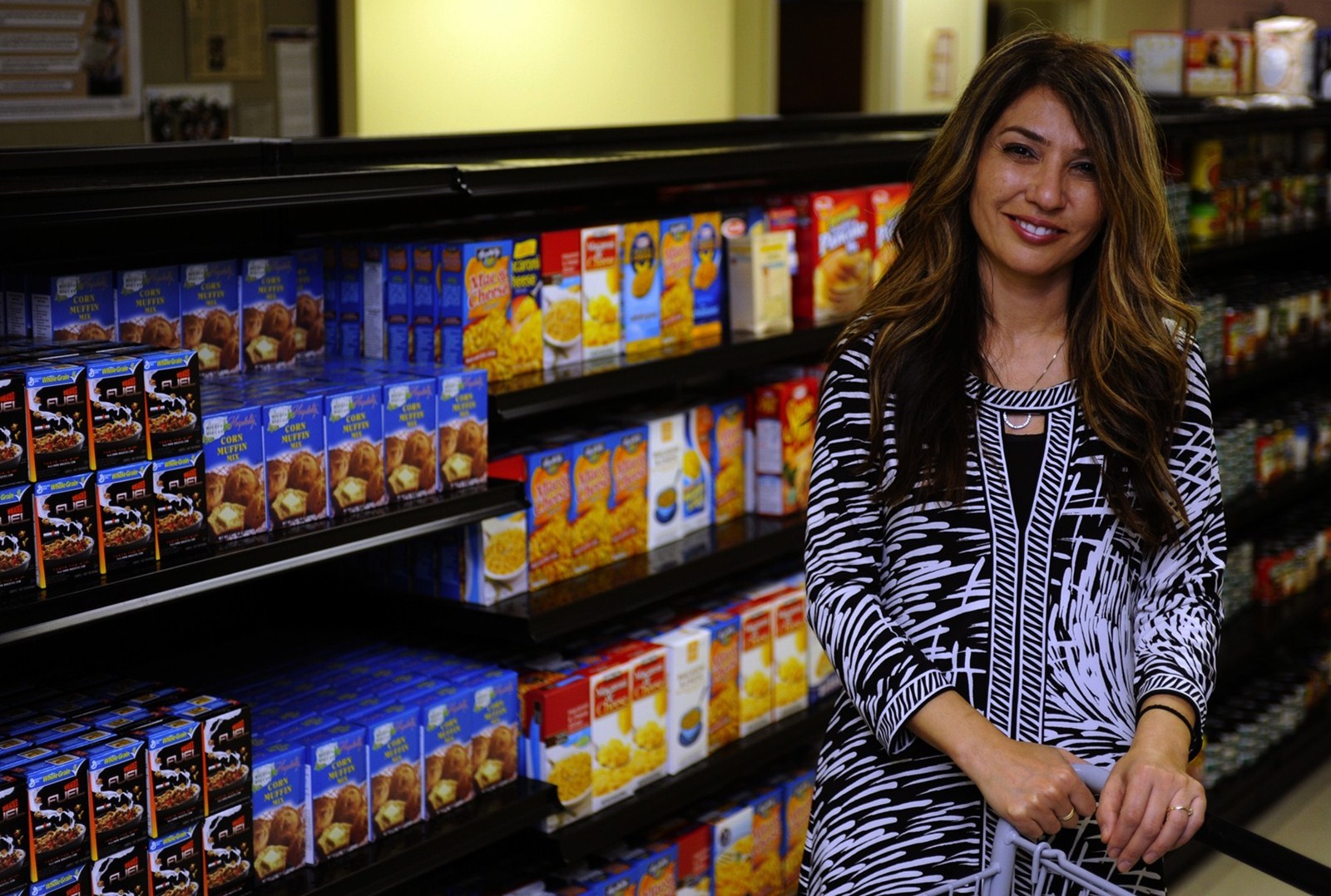Food Bank will shift to larger home
Facility moving in October to keep up with rapid increase in demand

Marianna Simonton, 78, guides clients at the Howard County Food Bank — five at a time. The space, tucked away off Route 108, cannot accommodate more than that at once.
It is not rare for a line to crawl outside the nearly 3,000-square-foot facility, the food bank's home for 10 years. Thirteen chairs in the waiting area fill up quickly. People sometimes bring in their own chairs as they wait in line to pick up food items. Some strike up conversation.
“We just process people as quickly as we can,” said Simonton, a volunteer at the bank for five years. “There is no typical day. Every day brings its new challenges and surprises and new opportunities.”
Over the past decade, the location itself has not changed significantly. But the number of people it serves has increased drastically. Since 2009, the number of individuals accessing the food bank has increased by 310 percent to 27,000 county residents each year.
“Coming from one of the most affluent, wealthy counties in the country, [the number] was shocking,” said Elizabeth Crammond, the food bank's general manager.
The increase is pushing the food bank to move to a new location in the fall in order to increase storage capacity, improve outreach to underserved communities and upgrade technology to track clients and supplies.
“We ask ourselves: What's in the best interest of the client? That question has not always been responded to in a highly positive fashion simply because of the logistics of this site,” said Bita Dayhoff, president of the Community Action Council, the county's designated anti-poverty agency,
The current storage site is roughly 1,200 square feet, limiting the amount of food the food bank can store. By October, the CAC will move the food bank to an 8,000-square-foot facility on Gerwig Lane in Columbia.
The food bank distributes roughly 687,000 pounds of food per year to its 27,000 county clients. Nearly 7.1 percent of Howard County residents are food-insecure.
Poverty levels are rapidly rising among children in the county. Over the last three years, the proportion of children living in poverty in the county has doubled, from 5 to 10 percent, according to the CAC's data.
The food bank has tried to keep up with increasing needs by branching out to the local community, organizing more food drives and increasing its volunteer force to efficiently handle services and distribute food. Partners in the nonprofit and faith-based community have set up 14 pantries in the county, up from a handful in the county six years ago.
“It has been extremely challenging,” said Dayhoff. “The increase in the number of individuals seeking help has long surpassed the capacity of the location.”
The new facility will also allow CAC to create a “one-stop-shop” for clients to access the food bank and tackle underlying causes of food insecurity by allowing clients to access the organization's other services, which include housing assistance and information about Head Start.
The new location is on a public transportation route and will be near the county's new nonprofit center, an ongoing project the county government hopes will house the county's key service organizations under one roof.
The CAC, one of the county's major nonprofit organizations, will not move to the center because the new center's occupancy costs are higher than what the CAC currently pays, said Dayhoff. The CAC hopes to be able to join the center in the future, said Dayhoff.
Simonton plans to volunteer at the new site, which will be fully operational in October.
“We'll be able to stretch out our elbows,” she said. “Unless it moves to another county, of course I'm going to be here. It's a very enjoyable and fulfilling experience.”


 PREVIOUS ARTICLE
PREVIOUS ARTICLE
